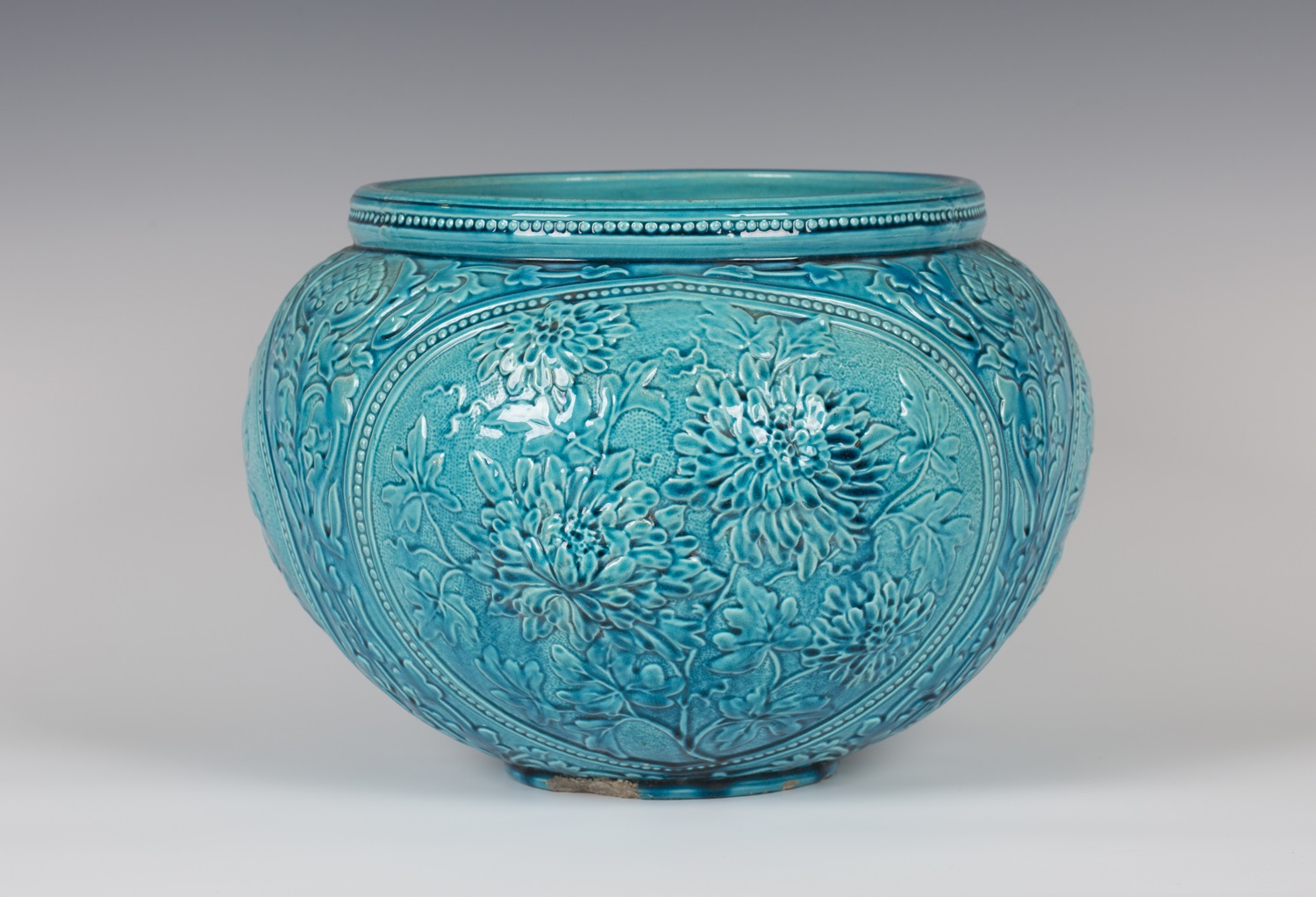Burmantofts The Leeds Art Pottery
I am always drawn to the art pottery of the late 19th century and as a proud Yorkshire lady
12/10/2023 Blog
I am always drawn to the art pottery of the late 19th century and as a proud Yorkshire lady my favourite factory is the Leeds firm of Burmantofts.
They are well known for their brightly coloured designs and quirky animal and mythological creatures.
In the mid-19th Century Burmantofts was still a rural agricultural area and not the residential inner city suburb of Leeds we know today. In 1842 two local men John Lassey and William Wilcock acquired 100 acres of land and sank a pit to extract the clay and coal.
The firm started off producing chimney pots, sanitary tubes and bricks. By the late 1870’s architectural use was the main core business of the company which was now known as Wilcock and Co using pottery called Burmantofts Faience.
They were commissioned to produce tiles in private houses, banks, universities, public houses as well as offices. Some good examples can still be seen today in the County and Cross Arcades in Leeds, the University of Leeds main entrance and the Adelphi public house.
Burmantofts Pottery became well known to the general public in 1881 when they were featured in an article in “The Artist and journal of home culture” and shortly afterwards at an exhibition in London.

The early pieces were all hand crafted often with snakes or monkeys entwined around the vases. My favourite pieces are spoon warmers modelled in the form of toads in a range of sizes and bright colours. These are always popular at auction and usually realise in the region of £150-400 each.
The most expensive and desirable pieces of Burmantofts Pottery are the Persian Isnik designs, and these examples were often marked with the artists monogram LK for Leonard King. His pieces are often very large sometimes 4 feet tall and painted in shades of blue and green with exotic fish or birds. Persian designs can often fetch several thousand pounds at auction and are highly regarded by collectors.
After 1885 the firm realised that these expensive and elaborate pieces had a limited market so they decided to concentrate on making more mass market pieces. They produced three main ranges, the first was plain but bright one colour pieces often in yellow, turquoise or red. The second slip cast with raised and cut out designs again in one colour and the third was multi coloured slip designs usually decorated with flowers and foliage.
Over 2200 different patterns were used at Burmantofts until their closure in 1904 when the company returned to architectural work but using a new kind of grey/ white terracotta called Burmantofts Marmo. In 1957 the firm closed and the land used to build a housing estate.
Burmantofts is always clearly marked with the company name or the monogram BF to the underside. So if you have any Yorkshire ceramics do bring them down to show us.